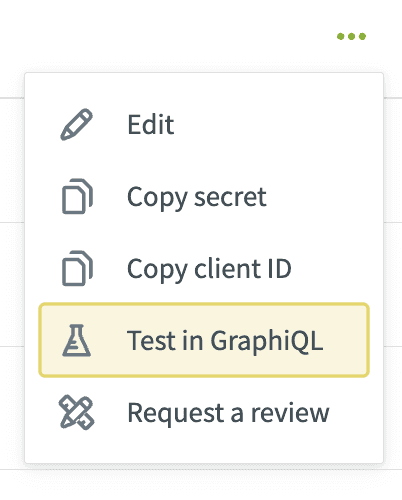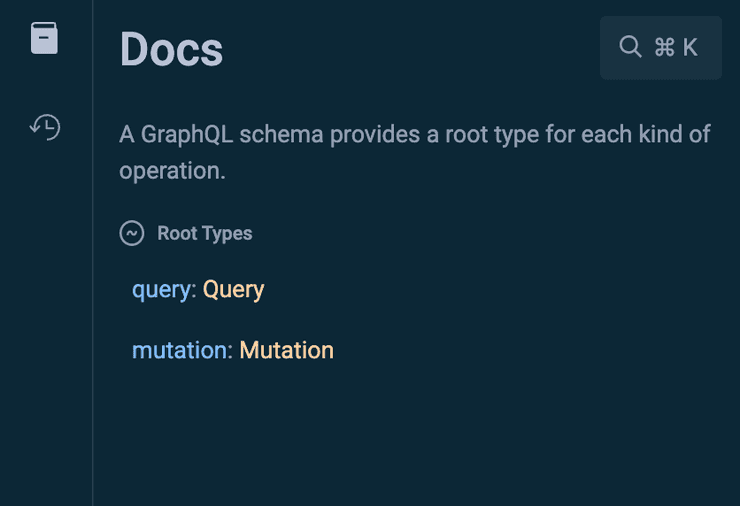Getting Started
Terminology
- App/Application: This is the software you are building that will communicate with Jobber. Published apps are installed from Jobber's App Marketplace by connecting to an existing Jobber account using OAuth 2.0 authorization from an admin user.
- Jobber Account: This is the company in Jobber that will Authorize your app to have access to their data. A Jobber account can be comprised of many users.
- User/Team Member: An individual user belonging to a Jobber account
- Developer: An entity building an app. A developer can have many apps.
1. Create a New Jobber Account To Test With
(This section can be skipped if you already have a Jobber account)
In order to test out Jobber's API and start building an app, you will need a Jobber account. You will be able to create data in this Jobber account and test our GraphQL API queries and mutations using the Make API Requests in GraphiQL steps detailed below. It is important to note that your Jobber account is a completely separate account from your Developer Center account.
For third-party app developers, there is a developer testing signup link that you can use to get a special type of Jobber account for app and integration testing. If you have previously created a regular 14-day trial Jobber account, it is also possible to get that converted to the special developer testing account type by contacting our API support email.
By default, the developer testing accounts in Jobber will have a trial period of 90 days. If you require longer than 90 days for building/testing your app then you can also contact our API support email to have the access period extended.
2. Create Your First App
In order to access the GraphQL Docs and Schema in GraphiQL, you will first need to create an app in the Developer Center. Any details about this app (e.g., Name or Description) can be modified later. To create your first app, first sign in to your Developer Center account and then navigate to the apps page and click on the 'NEW' button to create your first app.
When creating your app, you will be prompted for:
- App name (required)
- Developer name (required)
- OAuth Callback URL (optional)
- Manage App URL (optional)
- App description (required)
- Features & benefits (optional)
- Scopes (required)
- App logo (optional)
- Gallery images (optional)
Many of the fields above aren't required to create your first app, but will
eventually be required before you're able to submit your app for review.
App name, Developer name, App description, Features & benefits,
App logo, and Gallery images are all important pieces that'll make up the
content of your app listing in Jobber's App Marketplace.
The uploaded app logo file must be:
- .PNG or .SVG only
- 384x384 pixels or greater
- Maximum size 1 MB
- Perfectly square
The OAuth Callback URL (AKA redirect URI) is the URL that a Jobber user will
be redirected to immediately after connecting and authorizing access to your
app. More details can be found
here.
The Manage App URL is an alternative URL that can be used for any accounts
that have already connected your app, but will have a need for navigating back
to it to manage or configure functionalities. More details can be found
here.
Scopes are where you can set exactly what kinds of data your app will be able
to read or write from Jobber accounts using the GraphQL API. They also determine
exactly what is shown on the OAuth screen when a Jobber user is connecting your
app (see screenshot below). While an app is in Draft state, the scopes can be
freely edited. However, if an app is published and would like to add more
scopes, all accounts that have connected the app previously will need to
re-authorize the app. More details can be found
here.
3. App Authorization Flow
For a detailed breakdown of how Jobber's OAuth 2.0 system works to provide Jobber admin user's the ability to approve certain apps to access their account's data, see the App Authorization Guide in the Building Your App section.
To help app developer's quickly get set up and start viewing/testing the API
endpoints, our Developer Center provides a quick and easy tool for handling the
OAuth 2.0 flow and getting an API access token for the Jobber account that you
are currently signed into in your browser. By following the steps in the Make
API Requests in GraphiQL section below, the Test in GraphiQL action will
take you to the Allow Access screen for your app and then automatically handle
the authorization code flow and redirect you to the GraphiQL tool with an API
access token that will be valid for 60 minutes.
4. Make API Requests in GraphiQL
Before fully building out your app, you can view the GraphQL Schema/Docs and
make API requests using the GraphiQL tool, which will access data from your
tester Jobber account. To do this, click on the three dots next to your
app in the Developer Center and then click Test in GraphiQL.
This will take you through the same OAuth 2.0 flow that a regular Jobber admin
user would go through when first connecting an app, and afterwards you'll be
redirected to the GraphiQL tool where you can view the available queries and
mutations with the Docs icon at the top left. Note that the scopes on your app
will be respected and you may not be able to query for all of the data seen
within our schema. The temporary API access token used in this session can also
be viewed from the Headers section in GraphiQL. The
API version number can also be edited
using the header variables.
An example query will already be provided for you, but a second example query
you could use to view the id, jobNumber, and title of every Job in your
tester account is:
query SampleQuery {
jobs {
nodes {
id
jobNumber
title
}
}
}
Alternatively, you can make API requests by posting your GraphQL query or
mutation to https://api.getjobber.com/api/graphql. You will need to include
the Access token from step 4 under the Authorization header, preceded with the
word bearer.
5. Start Building Your App
For more details on how Jobber apps work and the processes around implementing, testing, and submitting your app for review, see the guides in the Building Your App section. See the App Template Project section if you would like to download and set up a working template app to start out with.


